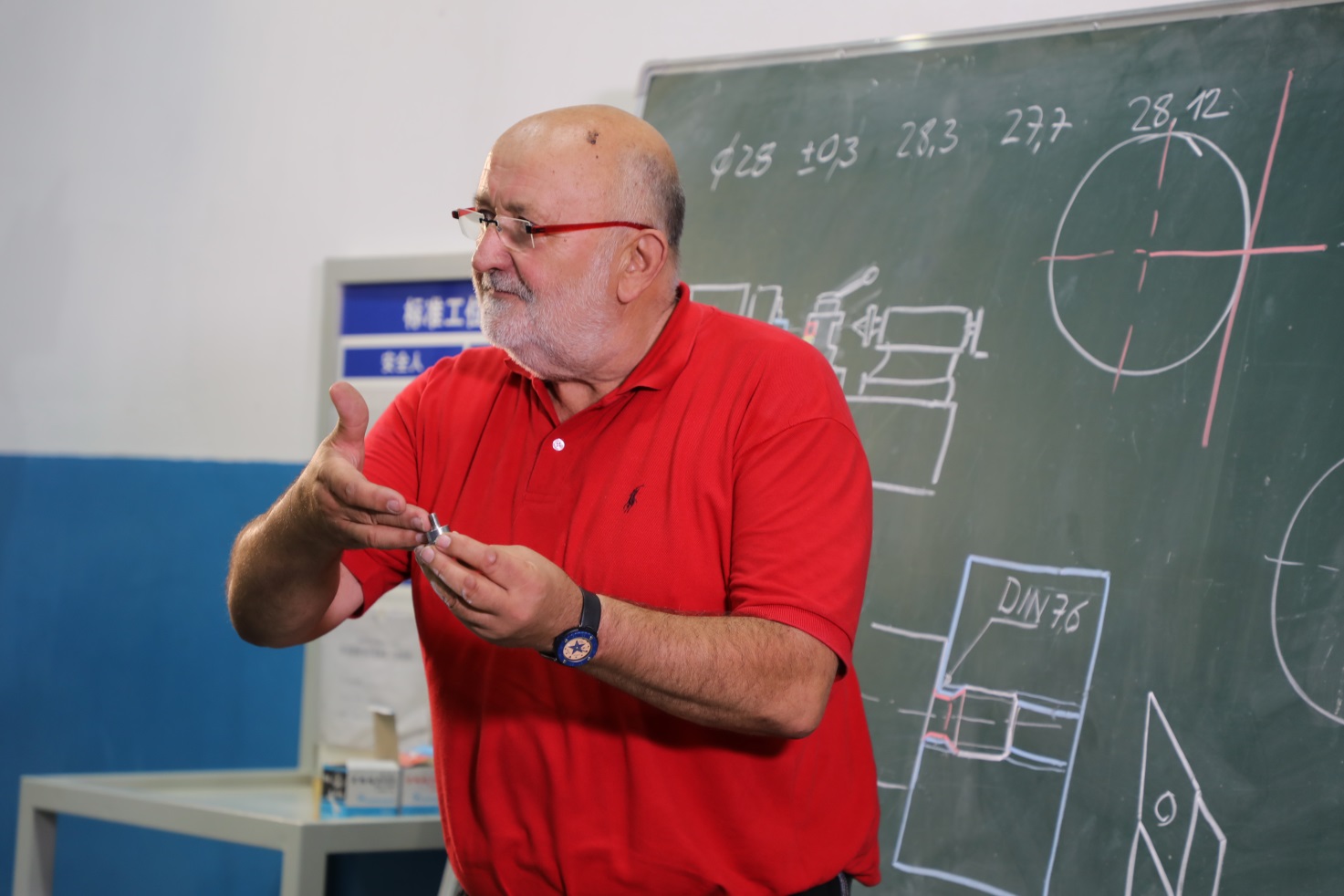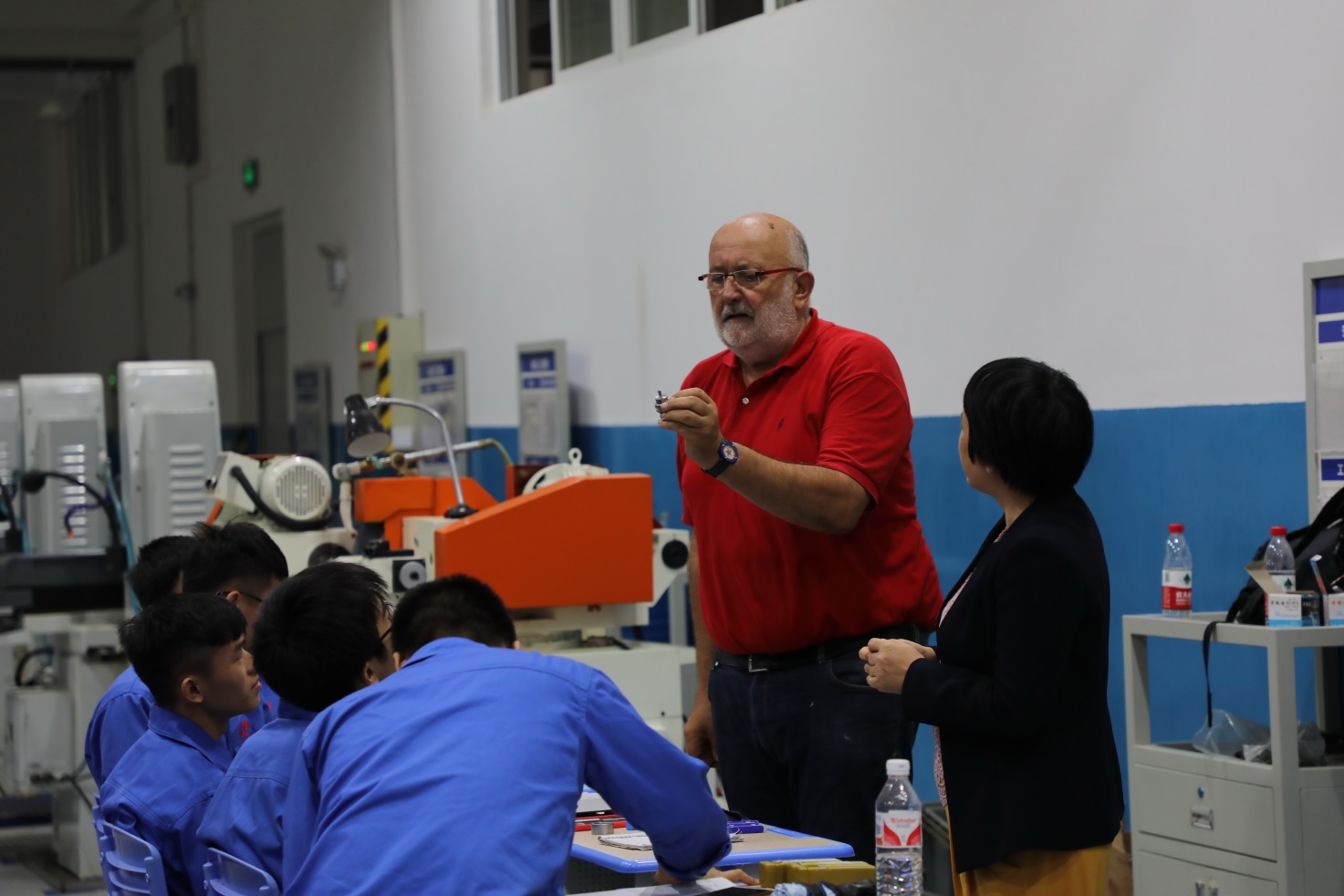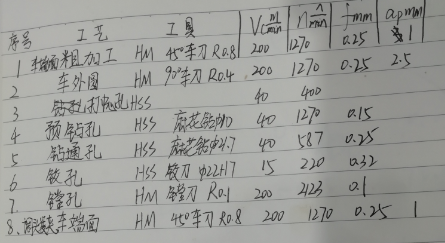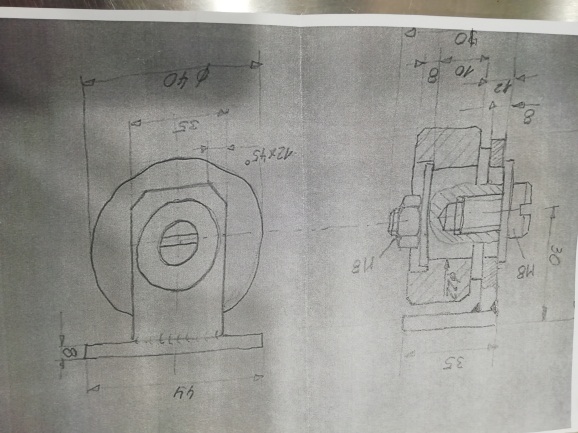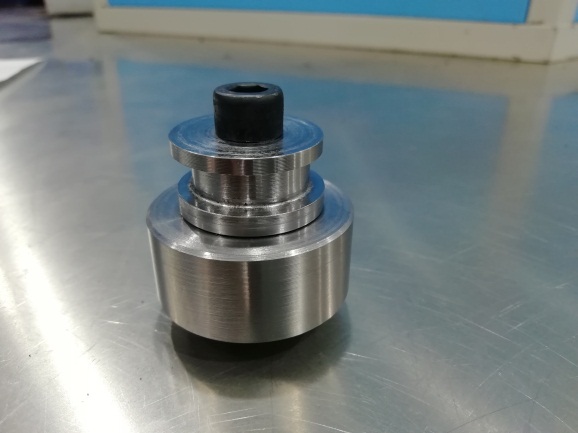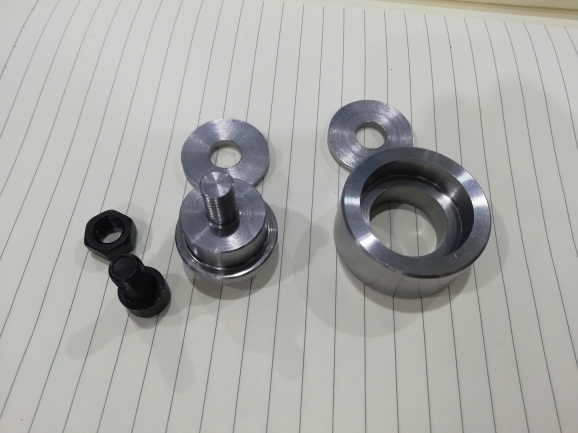German Expert Shows Teachers the German Project-based Learning Integrating Theory and Practice at School of Mechanical and Electrical Engineering
Campus News (Text and photos by Chen Hua from School of Mechanical and Electrical Engineering) The dual system of vocational education in Germany is well-known in the world, and its action-oriented curriculum teaching model has been recognized by educational peers in various countries. The localization pilot of the dual system in our School is carried out in full swing. It is necessary to solve the problem about how to combine theoretical teaching with professional skills training through a teaching project in dual system localization, so that students can learn in action. Recently, through AHK Shanghai Representative Office, German expert Elmar Stockhausen was invited to demonstrate the whole process of the German project-based learning integrating theory and practice to teachers and students from Class 2 of Mechanical Design and Manufacturing of 2016. Elmar’s demonstration will effectively help our teachers to deeply understand the essence of German vocational education concept, and through absorption and reference, explore a teaching model of dual-system curriculum with local characteristics.
He is both a professor and a master of skills
With a thick beard, Elmar is 1.85 meters tall and slightly on the heavy side. He is a German expert who will carry out 18-day teaching in our college.
Elmar has rich experience in study and work. After graduated from junior high school, he successively entered a vocational school, a technical college, and an applied science and technology university. Then, he was engaged in the manufacturing and sale of CNC machine tools in BBF in Germany for two years. From 1987, Elmar taught at Christian-Schmidt-Schule in Neckarsulm, Germany. He served as the head of the Metal Processing Department and the chairman of the Baden-Württemberg Precision Machinery Working Committee. Elmar can teach and make. He is both a professor and a master of skills.
The task list he issued was unique
Elmar gave students a study task list at his first class for the School of Mechanical and Electrical Engineering. Teachers and students were astonished by the content and requirements. On the task list were only the assembly sketches of the pulley assembly, and students were required to draw all the detail drawings according to the assembly sketches and determine technical requirements such as tolerance and surface roughness by referring to various manuals and the indicated dimensions of the parts. As Elmar said, you cannot fully understand the requirements for the parts if you don’t draw the detail drawings on your own. The teachers, who observed Elmar’s class, said that in the past, they provided the students with a complete set of drawings together with the task list. After seeing Elmar’s task list, they thought it was unique...
He showed us the German project-based learning
The six steps of teaching, i.e. "information, decision, plan, practice, examine, evaluate", are familiar to many of teachers. This time, Elmar has brought the original German project-based learning based on the six-step approach.
In the "information" stage, he actively guided students to understand the working principle of the pulley according to the assembly sketches of the pulley assembly and analyze the working requirements of the relevant parts, asked them to draw the detail drawings according to the assembly sketches, design the technical requirements such as part dimension, tolerance, surface roughness by referring to books such as the Concise Mechanical Manual in German and determine the part materials according to the service requirements of the parts. Essentially, the process of drawing the detail drawings is the detail design of the assembly sketches. As a number of courses of mechanical engineering such as Mechanical Drawing, Tolerance and Metallic Materials were involved, the course served as a practical application of the knowledge that students have learned before.
Elmar introduced in detail the working mode in Germany. He said "decision and plan" are very important and indispensable, and any work must be carried out as planned in Germany. Elmar did as he said. In the "decision and plan" stages, he used about 8 lessons to explain the metal cutting machine tools, cutting tool materials, cutting principles of cutting tools, machine tool fixtures, machining process preparation, parts measurement and other related knowledge. From the aspects of process, efficiency, cost, etc., he let students understand why the process of a workpiece is designed in such a way and why the machine tool, fixture, measuring tool and cutting parameters are so chosen, and guided them to develop a machining process of a pulley part, with the processes of remained pulley parts to be completed by the students. Elmar repeatedly emphasized to students that it was not allowed to enter the training workshop for machining if there was no machining plan.
In the "practice" stage, Elmar required the regulations of lean management in the workshop must be observed, and showed the students how to operate the machines. He repeatedly emphasized the characteristics of production about high quality, high efficiency and low cost, and guided the students to operate the machines to process the parts according to the machining plan.
In the "examine" stage, Elmar required students to properly use the measuring tool to measure the machined parts, and write the measured results on a blackboard in groups. In such a way, the quality of the parts made by students is clear at a glance. For the case where some items are out of tolerance, he and the students jointly analyzed the cause(s) thereof so as to avoid such mistakes in the future.
In the "evaluate" stage, Elmar organized students to summarize lessons and share experience.
Many students reported that the pulley assembly task given by Elmar allowed them to comprehensively apply their professional knowledge learned in the past two years. The learning was busy and fruitful due to the combination of learning and making. Teachers who observed Elmar’s class said that Elmar showed a large comprehensive teaching project. In the future, teachers in the curriculum group must cooperate well. Small teaching programs of a single curriculum should be scientifically designed under the premise of clarifying the work requirements and processes of a large comprehensive project to ensure reasonable integration of various programs.
How to choose the cutting parameters reasonably is a bottleneck for students majoring in mechanical engineering. In order to let students understand how the cutting parameter affects the surface roughness of a parts, Elmar gave students an operation demonstration by selecting different cutting speeds and cutting depths to generate different surface quality and produce different shapes of cutting scraps. By watching, touching and listening, students deeply understood the influence of cutting parameters on the quality of the parts.
Teachers have a variety of methods in explaining the difficult points for students. Elmar's teaching method of answering questions with action is highly referable. In the next few days, Elmar will also introduce German teaching methods and the role of AHK examiners to the teachers. Let’s look forward to more gains.
Elmar can teach and make. He is both a professor and a master of skills.
Elmar is teaching
Work plan made by a student
Assembly sketches of the pulley assembly
Pulley parts completed by students


